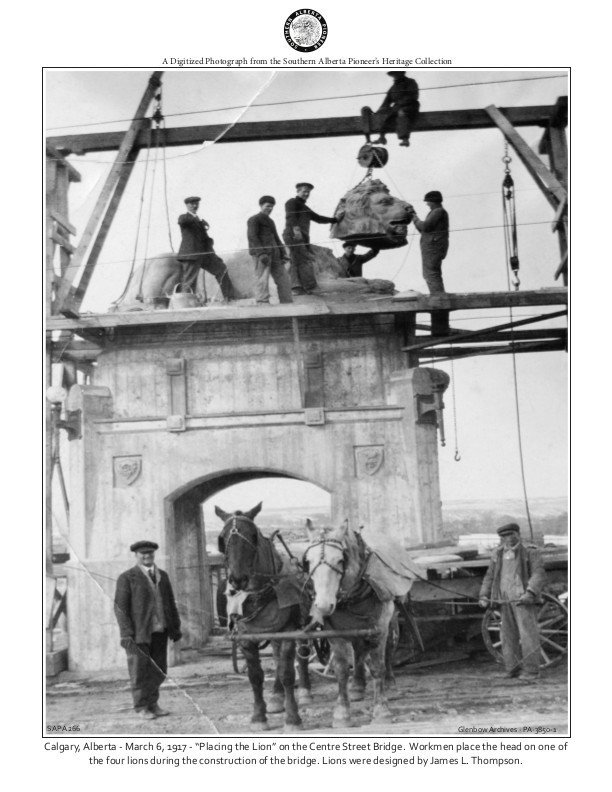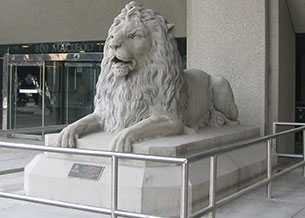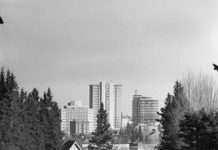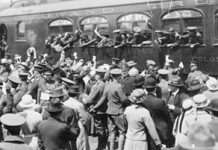
800 Macleod Trail S.E., 1917 – 1999
Early in 1917 the four Original Centre Street Bridge Lions were installed upon the newly completed, reinforced-concrete Centre Street Bridge (1916) and became the most impressive ornamental features of the structure. Original blueprints for the bridge included lion sculptures and other carvings, but this ornamental work was almost eliminated from the plans due to the high cost estimates. However, an economical option was apparently discovered when Alderman Hornby recalled seeing a lion sculpture on a northwest Calgary property. The owner and artist was a Scottish-born stonemason, James Langlands Thomson, who had come to Calgary in 1913 and happened to be employed as a stone carver for the City. He agreed to create the artistic ornamentation for the bridge and was seconded from his regular job to complete the four lions.
The four original Centre Street Bridge Lions are cast-concrete sculptures. They each measure 12 feet in length, 5 feet in width, and 8 feet in height including pedestal, and weigh approximately 12,730 kg each. Of the four original lions, one has been restored and was reinstalled in its current location in front of the Calgary Municipal Building in 2003; another that wasn’t restored but left in its original condition now overlooks the bridge that was its original home from the Rotary Park bluff. The four sculptures were initially located from 1917-99 atop kiosks on the Centre Street Bridge.
According to a contemporary newspaper report, the dry process of sculpting with cement used to create the lions was new to western Canada and nothing of this scale had yet been done. It was also new to Thomson, who drew on his great artistic skill and experience working in hard stone and marble, to complete both the model and final sculptures.
The figures of the reposing lions are based on Sir Edwin Landseer’s bronze lions at the base of the Nelson monument in London’s Trafalgar Square. Originally, the lions represented the city’s strong associations to Britain and its empire, being a widely recognized British symbol. With Calgary’s large Anglo-Saxon population, the young city retained close ties to Britain, particularly given the immediate context of the First World War in which many Calgarians served in allegiance to the British Empire. Other symbolic sculptural ornament such as the rose, shamrock, thistle, maple leaf and buffalo adorned the bridge to represent the British Empire and western Canada, yet the lions were by far the most prominent features.
Historically, the lions were also associated with local legends, being said to leap from their pedestals at midnight to roam through Chinatown in search of food.
Over time the lions became well-known Calgary icons and the subjects of strong emotional attachment among Calgarians. The lions’ image has been frequently featured in a wide variety of formats, such as tourism materials and interpretive displays, solidifying their familiarity with Calgary citizens and visitors. Notably, the lions’ image is also the basis of the Calgary Heritage Authority’s Lion Awards which recognize local heritage conservation initiatives. The prominent placement of one of the original lions at the entrance to the Municipal Building has served to put a large number of Calgarians in continued contact with the lions with the effect of making the lions almost a de facto symbol of Calgary’s civic affairs. Originally a symbol of Calgary’s ties to Britain, the Centre Street Bridge Lions have come to identify Calgary itself.









